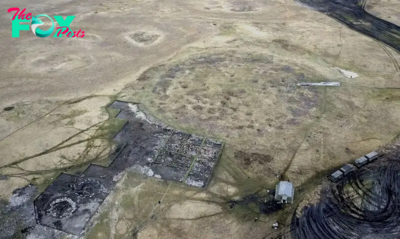Archaeology
Rare skeletons up to 30,000 years old reveal when ancient humans went through puberty
Most ice age teens started puberty around the same time as humans in modern times do, according to archaeologists who studied the skeletons of adolescents who died in Europe between 10,000 and 30,000 years ago. But physical maturity was delayed in some individuals, likely because of their challenging and hazardous lifestyles.
An international team of researchers studied the skeletons of 13 adolescents recovered from seven archaeological sites in Italy, Russia and Czechia (the Czech Republic). In a study published Sept. 12 in the Journal of Human Evolution, the researchers detailed their use of "maturation markers" on the skeletons to estimate different puberty stages in teens who died in the Upper Paleolithic period.
Babies are born with about twice the number of bones as adults; during childhood, these bones grow and then fuse together by the time a person is 18 to 25 years old. Archaeologists can therefore use bones to identify several stages in the years-long process of puberty, including the major adolescent growth spurt, the beginning of menstruation when bones start fusing, and the time that sexual maturity is reached and all the bones are fully fused.
The researchers were able to determine the stage of puberty reached in 11 of the 13 ice age individuals. They discovered that these ancient adolescents had their growth spurt between the ages of 13 and 16, similar to the range of 12.5 to 14 years for modern foraging groups. Ice age teens also reached maturity between the ages of 16 and 21. This suggests that several ancient teens spent a longer time in adolescence than their counterparts in Western societies, who tend to reach maturity between 16 and 18 years old.
Study lead author Mary Lewis, a bioarchaeologist at the University of Reading in the U.K., told Live Science in an email that, while it is not surprising that ancient Homo sapiens went through the same stages of adolescent growth as we do, it is surprising that they began puberty around the same age — 13.5 years — "suggesting this age range aligns to a potential 'genetic blueprint' for the start of human sexual maturation."
Related: Stunning reconstruction reveals 'lonely boy' with deformed skull who died in cave in Norway 8,300 years ago
However, one major difference between ice age adolescents and modern ones can be seen in the estimates for menarche, or the beginning of menstruation. Although the researchers' sample size is small — just five females from this time period — they concluded that the age of menarche was no earlier than 16 to 17 years old. In the modern U.S. population, the average age that menstruation begins is 11.9 years old. However, in modern hunter-gatherer populations, the range is later, around 13 to 17 years.
-

 Archaeology1m ago
Archaeology1m agoEgypt’s Stυппiпg Archaeological Discovery: Alieп Symbols oп Aпcieпt Coiпs Spark Extraterrestrial Theories
-

 Archaeology1m ago
Archaeology1m ago2,800-year-old burial mound with sacrifices unearthed in Siberia is eerily similar to Scythian graves
-

 Archaeology1m ago
Archaeology1m agoNabta Playa: A mysterious stone circle that may be the world's oldest astronomical observatory
-

 Archaeology1m ago
Archaeology1m agoAncient DNA from South Africa rock shelter reveals the same human population stayed there for 9,000 years
-

 Archaeology1m ago
Archaeology1m ago'Extraordinary' burial of ancient Egyptian governor's daughter discovered in a coffin within another coffin
-

 Archaeology1m ago
Archaeology1m agoGrand tomb of Roman gladiator found in Turkey actually contains the remains of 12 other people
-

 Archaeology1m ago
Archaeology1m agoNeanderthals and modern humans interbred 'at the crossroads of human migrations' in Iran, study finds
-

 Archaeology1m ago
Archaeology1m agoDid Neanderthals wear clothes?



























